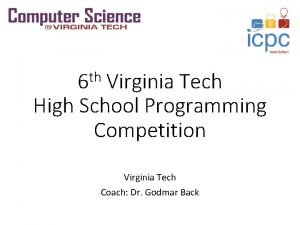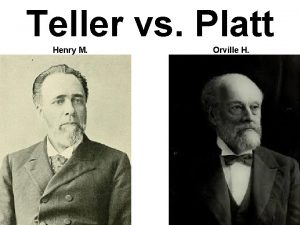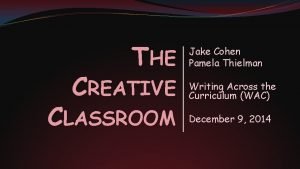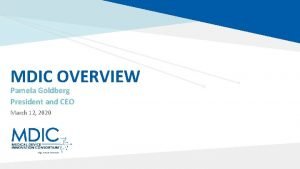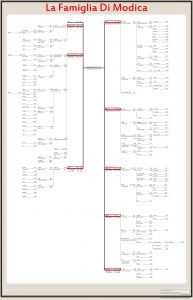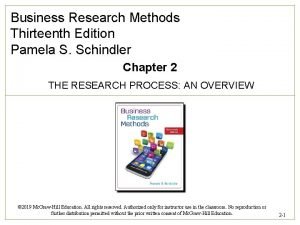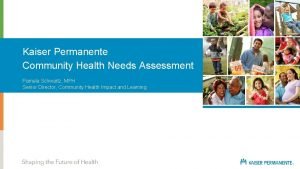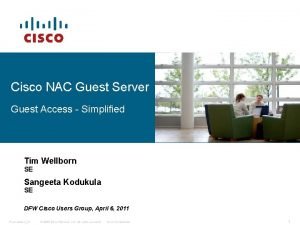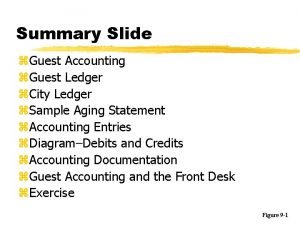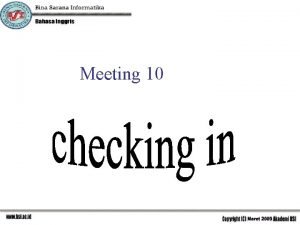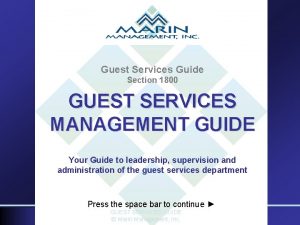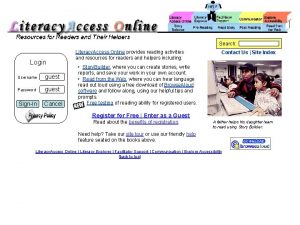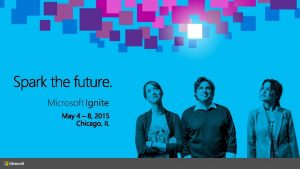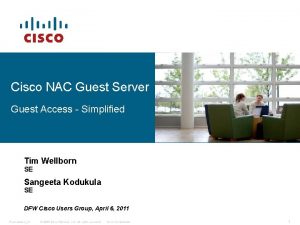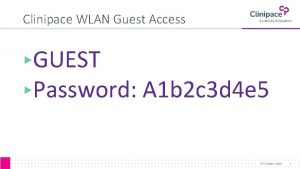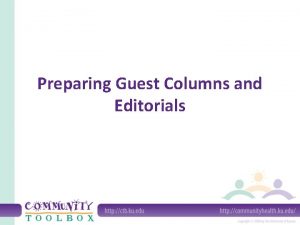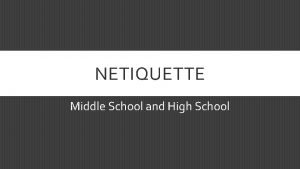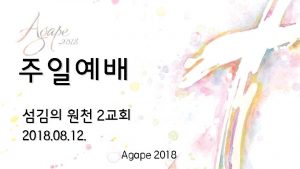2018 Vision for Platt High School Pamela Guest


![Introduction Vision for Orville H. Platt High School [O. H. Platt High School/ Platt] Introduction Vision for Orville H. Platt High School [O. H. Platt High School/ Platt]](https://slidetodoc.com/presentation_image/014390ab4406459fbecbd37d4e23026c/image-3.jpg)







![2018 Vision Overview Given the “obsess[ion]” with achievement (Fusarelli, 2011, p. 215) and slow 2018 Vision Overview Given the “obsess[ion]” with achievement (Fusarelli, 2011, p. 215) and slow](https://slidetodoc.com/presentation_image/014390ab4406459fbecbd37d4e23026c/image-11.jpg)







![References, continued Connecticut State Department of Education [CSDE]. (2001 -2011 b). Strategic school profile References, continued Connecticut State Department of Education [CSDE]. (2001 -2011 b). Strategic school profile](https://slidetodoc.com/presentation_image/014390ab4406459fbecbd37d4e23026c/image-19.jpg)



- Slides: 22

2018 Vision for Platt High School Pamela Guest Future of Education Jennifer Wojcik

Table of Contents Introduction, slide 3 Platt High School, slide 4 Literature Review Educational Technology Trends, slides 5 -6 Economic and Public Policy Trends, slides 6 -7 Demographic Trends, slide 8 Futuring Approach, slides 9 -10 Vision for 2018, slides 11 -13 Preparation, slides 14 -15 Call to Action, slide 16 Conclusion, slide 17 References, slides 18 -22
![Introduction Vision for Orville H Platt High School O H Platt High School Platt Introduction Vision for Orville H. Platt High School [O. H. Platt High School/ Platt]](https://slidetodoc.com/presentation_image/014390ab4406459fbecbd37d4e23026c/image-3.jpg)
Introduction Vision for Orville H. Platt High School [O. H. Platt High School/ Platt] involves: Mobile devices Online learning Learning analytics Also included: Background on Platt Review of relevant literature Explanation of futuring techniques Proposed next steps

Platt High School Opened in 1958 (Orville H. Platt High School, 2012 -2013 a); one of two public high schools in Meriden, CT “Comprehensive” high school with 1, 186 students and 84 teachers (New England Association of Schools and Colleges [NEASC], 2012, pp. 14 -15) Goal: help students “become confident, self-sustaining adults who contribute to society” (O. H. Platt High School website, 20122013 b, para. 1) Connecticut State Department of Education [CSDE] (2001 -2011 b) statistics: 64. 3% eligible for free-reduced price-meals 62. 5% are minorities; 44. 5% are Hispanic; 5. 7% are not fluent in English 4. 6% are gifted/talented; 14% have disabilities 2009 graduation rate: 89. 8%; 74% of graduates went on to college (NEASC, 2012, p. 15) CAPT results below state averages even after disaggregating the data (CSDE, 2012) 2013 -2014 initiatives reflect journey to become “high school of tomorrow” (Meriden Public Schools [MPS], 2013 a): Awarded continued NEASC accreditation (Allison, J. letter to Montemurro, R. , May 31, 2013) Recommendation: more rigorous teaching strategies reflecting increased use of formative and summative assessments Nellie Mae grant award (MPS, 2013 b): student achievement via “student-centered learning” (para. 1) Fall 2013: Bring Your Own Device (BYOD) pilot (smartphones, tablets, e-readers) (Primicerio, 2013 a) Building renovation “renew(s) commitment. . . with new, attractive and secure high school facilities” (Deputy mayor as cited in Brechlin, 2013, para. 14)

Literature Review Educational Technology Trends E-learning and learning analytics: important given Platt’s objective to increase student achievement and personalize learning E-learning: “any electronically assisted instruction” which typically leverages the Internet (Yang, 2013, p. 429) E-learning 2. 0: offers students greater ownership of learning through ability to acquire, organize, and develop content while partnering with others (Yang, 2013, p. 431) “Control” and “access”: attractive features of online learning (Project Tomorrow, 2009, p. 1) Prediction: half of high school learning will happen online before 2020 (Christensen, as cited in Project Tomorrow, 2009, p. 1) Challenges: funding and qualified teachers (Project Tomorrow, 2009, p. 3) Higher education: increasingly using Internet in addition to, or instead of, classroom-based learning (Dew, 2012, p. 8); “entirely online [and blended] programs. . . provide new opportunities to expand education beyond the limitation(s) of. . . location” (Betts, Hartman & Oxholm, 2009, p. 4) Mobile learning: “convenient” and “collaborative” e-learning tool likely to surpass desktop internet usage by 2015 (Yang, 2013 pp. 433, 435) Mobile devices: “gateways to endless learning, collaboration and productivity”; widespread adoption likely in 1 year (Johnson et al. , 2013, pp. 3 -4) Smartphones: mobile devices “influencing and changing learning practices”; used seamlessly by college students for personal and academic purposes (Jubien, 2013, p. 12) Tablets: mobile devices which may be more appropriate for reading than smartphones (Jubien, 2013, p. 11) School leaders: pursuing mobile learning to save money and facilitate student-centered learning (Project Tomorrow, 2011, p. 6) “Digital equity”/”digital divide”: though increasingly affordable, the “gap between people who have and people who don’t have access to digital/modern information technology” needs to be addressed (Project Tomorrow, 2011, pp. 8 -9; Yang, 2013, p. 439)

Literature Review, continued Educational Technology Trends, continued Learning Analytics Benefits: e-learning enables data collection and analysis to “adapt instruction to individual learner needs in real time” while supporting continuous improvement efforts at all levels of education (Johnson et al. , 2013, p. 20); educators can leverage technology and learning analytics to improve student achievement and evolve teaching efficacy (Dyckhoff, Zielke, Bultmann, Chatti & Schroeder, 2012, p. 58) Prediction: broad usage of learning analytics by 2016 (Johnson et al. , 2013, p. 4) Complexities: integrating data from multiple sources (Johnson et al. , 2013, p. 21) Learning Analytics Toolkit: developed in response to data integration complexity issue (Dyckhoff et al. , 2012) Data privacy: concerns about privacy of student information (Dyckhoff et al. , 2012, pp. 59 -73; Johnson et al. , 2013, p. 21); pseudonyms for student names proposed (Dyckhoff et al. , 2012, pp. 59, 69, 72) Future enhancement: providing students direct access to analytics about their learning (Dyckhoff et al. , 2012, pp. 73 -74) Economic and Public Policy Trends School finances, No Child Left Behind (NCLB), and higher education costs: all significant given Platt’s “In Need of Improvement” designation (CSDE, 2010 -2011) and location in an economically challenged community. School Finances Considerations: financial budgets are a key concern in advancing technology usage in schools (Johnson et al. , 2013; Project Tomorrow, 2009, p. 3) Recommendations: “improve operational efficiencies” (Maguad, 2007, p. 248); make “equity” and “efficiency” co-priorities (Rice, 2004, pp. 146 -147).

Literature Review, continued Economic and Public Policy Trends, continued No Child Left Behind (NCLB) Government: “obsessed” with closing the achievement gap (Fusarelli, 2011, p. 215) Reauthorization: Elementary and Secondary Education Act (ESEA) reauthorization effort admits NCLB shortcomings and “promise[s] to reward success instead of labeling failure” (Berry & Herrington, 2011, p. 273) Challenges: schools continue to face intense pressure to address achievement while competing for funding based on progress and proposed actions; obstacles include limited resources and budgets, new requirements to implement Common Core Standards, and difficulties attracting highly qualified teachers to low-performing schools (Berry & Herrington, 2011, pp. 275, 287 -288) Students and teachers: acknowledging the role standards and a challenging curriculum play in student success (pp. 8 -9), Haycock (2001) argued “students need extra help” and “teachers matter a lot” (p. 10) Higher Education Costs “Affordability of higher education continues to be one of the most critical policy issues in the [U. S. ]” (Betts, Hartman, and Oxholm, 2009, p. 5) With tuition and room and board increasing well beyond the rate of inflation, “the amount families pay for college has skyrocketed 439% since 1982” (Wang as cited in Betts et al. , 2009, p. 7). Student debt often far surpasses graduate income (Dew, 2012, p. 10) “The economic investment in higher education is so great, and the ramifications of that investment are so significant, that the decision when and where to pursue post-secondary education may now be the most significant one an individual can make” (Dew, 2012, p. 11)

Literature Review, continued Demographic Trends Diversity and poverty trends are highly relevant for Platt: Platt’s student body increased 7% from 2001 -2002 to 2010 -2011, with 55%, 62%, and 588% increases in the percent of minorities, Hispanics, and bilingual students, respectively (CSDE, 2001 -2011 a; CSDE 2001 -2011 b) The percent of Platt students receiving free or reduced meals, for whom an achievement gap of over 28 points was recently observed (CSDE, 2012), increased 72%. Diversity “U. S. population is becoming more racially and ethnically diverse” (Shrestha & Heisler, 2011, p. 18) U. S. Census Bureau projected percent growth for all non-white races (p. 21) and an estimated 3. 5% average annual increase in the percent of Hispanics (as cited in Shrestha & Heisler, 2011, p. 22), suggesting Hispanics will be a majority minority at Platt by 2018 “ 11% of African American students and 22% of Hispanic students” did not graduate in 2006 (Yates, 2008, p. 7) “Standardization reform efforts advance a sameness agenda” (p. 5) with white students positioned as the “norm” (p. 4), and yet the “playing field [for diverse students] is anything by even or level” (p. 5). (Milner, 2013) Future majority of school students (the “culturally and linguistically diverse”) “will not graduate. . . in tragic numbers” (Yates, 2008, p. 8) Poverty Rates for African Americans and Hispanics are 3 -4 times greater than non-Hispanic whites (Shrestha & Heisler, 2011, p. 30) NCES found a correlation between increased poverty and decreased student achievement (as cited in Fusarelli, 2011, p. 266) Haycock (2001) acknowledged poverty as significant, but cautioned schools against making it an excuse (p. 8) “Poor children are more likely to drop out of school. . . [and] get less education” (Mayer, as cited in Fusarelli, 2011, p. 218) With slow economic recovery, poverty levels will likely stay “comparatively high” (Shrestha & Heisler, 2011, p. 29)

Futuring Approach: Background “Anticipatory decision-making process that leads to planning and program development” (Sobrero, 2004, para. 7) Used strategically in many fields, including business and the military (Mietzner & Reger, 2005, pp. 221222) Critical for education; significance is “profound” given “ 50% of the jobs/professionals that children now aged five will enter, do not currently exist” (Moorcraft, 2007, p. 4) Futuring Technique(s) To prepare children for success, academic institutions should employ futuring considering a “range of possib[ilities]” (Mietzner & Reger, 2005, p. 235) Scenarios Describe what could happen; ideally 2 -4 are developed (Mietzner & Reger, pp. 220, 223). Goal should not be to develop a reliable prediction, but rather to enable “better decisions about possible futures” (Daum as cited in Mietzner & Reger, 2005, p. 222) Scanning To develop relevant scenarios, futurists should scan for “threats and opportunities” (Strubhar, 2011, p. 58) Involves research and observation regarding the internal and external environment with focus on pertinent history, changes, and trends (Sobrero, 2004, paras. 8 -9) Futuring Model Bouchard (2012) explained the futuring process using the above visual. The circles captured “themes” a futurist would “funnel. . . Into a futuring technique. . . ”, such as scanning. Trends and other relevant factors would be considered in order to develop one or more reasonable scenarios regarding a future state.

Futuring Approach: Application to 2018 Vision Process Numerous scholarly texts and professional sources scanned for insight into: Platt-specific considerations Major technology, economic, public policy, and demographic changes Post University-provided futuring planning tool (see Figure 1, below) used to capture findings and analyze potential impacts and related implications Notes The 2018 vision offered reflects an effort to balance external trends with Platt’s primary concerns The author acknowledges the limitations of a single scenario based largely on six weeks of independent research Figure 1: Excerpt from Post University Futuring Planning Tool used for this project
![2018 Vision Overview Given the obsession with achievement Fusarelli 2011 p 215 and slow 2018 Vision Overview Given the “obsess[ion]” with achievement (Fusarelli, 2011, p. 215) and slow](https://slidetodoc.com/presentation_image/014390ab4406459fbecbd37d4e23026c/image-11.jpg)
2018 Vision Overview Given the “obsess[ion]” with achievement (Fusarelli, 2011, p. 215) and slow pace of reform (Berry & Herrington, 2011, p. 288), high stakes testing will exist in 2018, but instruction will shift focus from memorization of facts to “collaboration, innovation, critical thinking and communication” skills (Mind. Shift, 2011, paras. 13, 17, 18) Consistent with Christensen’s prediction (as cited in Project Tomorrow, 2009, p. 1), most courses will be conducted in a “blended” model incorporating both online and classroom-based learning (Yang, 2013, p. 432). A Blended Learning Approach Block scheduling will be adopted; students will meet 2 -3 times per week in course-specific classes One block daily will be spent in online learning labs moderated by cross-disciplinary “learning coaches” (Andersen, 2011, p. 17) Online learning will be pace-based (Project Tomorrow, 2009, p. 1), including “intelligent tutoring” (Brown, 2008, pp. xiii-xiv) to provide point-ofneed assistance, support for bilingual and special needs students, and additional challenges based on individual progress. Students will access analytics regarding learning strengths and opportunities (Dyckhoff et al, 2012, pp. 73 -74) Inside and Outside the Classrooms: will have Smartboards and collaborative learning pods equipped with recharging stations for mobile devices Students will be active contributors to learning experience, leveraging smartphones and school-provided tablets for various purposes, e. g. , reading, questions, notes and assignment management (Jubien, 2013) Students will use tools like Edmodo and Twitter for additional collaboration and valuable “extra help” (Haycock, 2001, p. 10).

2018 Vision, continued Student Learning Assignments will be project-based and self-selected based on students’ personal or career interests (Mind. Shift, 2011, para. 11) Learning will have a core component and a customized component reflecting student-specific objectives (Andersen, 2011) Business partnerships will provide students digital access to real-world applications and subject matter experts; added benefits: potential internships, scholarships and/or career opportunities (Louis & Miles as cited in Fusarelli, p. 229). Technology-Aided Assessment Students will create an electronic portfolio of work which will drive “more formative, qualitative assessment” (Hartnell-Young as cited in Becta, 2008 -14, p. 22) Students will present a summary of their portfolio as a graduation requirement Learning analytics will provide teachers real-time insights and aggregate, graphical analysis to improve instruction and help students learn (Dyckhoff et al. , 2012, p. 73; Johnson et al. , 2013, p. 24) Challenges Securing budget, expertise, and support resources Establishing technical infrastructure Gaining stakeholder buy-in Finding qualified, willing teachers and training those teachers Effectively managing the overall change program (Project Tomorrow, 2009, p. 3).

2018 Vision, continued Opportunities Vision is directly aligned to NEASC and Nellie Mae objectives, capitalizes on BYOD pilot, and recognizes realities of building renovation effort School supported, technology-driven personalized learning… … is a cost-effective means of increasing engagement (Dew, 2012, p. 8) that can serve to narrow the “digital divide” (Project Tomorrow, 2011, pp. 8 -9; Yang, 2013, p. 439) … reduces bias, enabling appropriate differentiation (Gunderson et al. , 2012) to help overcome historic relationships between achievement/graduation rates and ethnicity/socioeconomic status (Fusarelli, 2011, p. 224) … better prepares students for college and careers where online education and training will be increasingly prevalent (Bencini, 2013, pp. 41 -43; Dew, 2012, p. 8) Advancing a student-centered agenda acknowledges a range of valuable student knowledge, helping “level the playing field” to heighten student performance (Milner, 2013) Burning platform for change Ignoring vision and opportunities likely leads to larger achievement gaps and lower graduation rates (Yates, 2008, p. 8).

Preparation 1. Platt teachers should complete the “how creative are you” self-assessment (Mind Tools, 1996 -2013) and read “Teaching for Creativity: Two Dozen Tips” (Sternberg & Williams, n. d. ) Teachers should dialogue with colleagues online about what they learned and how they can apply it Exercises serve two purposes Setting the stage for future change Enabling near-term improvements in instructional practices 2. Teachers should be trained on emerging technology trends and how these can improve student performance Teacher retention already issue in STEM areas, (Curtis, 2012, p. 787); important teachers clearly understand how roles may evolve Training should … … be online as “teachers who learn online become more comfortable with the technology” (Project Tomorrow, 2009, p. 4 ) … stress benefits of technology for students in light of teacher interests in “making a difference” (Curtis, 2012, p. 786) … assure teachers they will have “space and support to become confident pedagogical innovators with the new technolog[ies]” (Becta, 2008, p. 21 ) … provide opportunities for reflection and sharing

Preparation, continued 3. Teachers should be encouraged and supported in adopting more rigorous, student-centered instructional practices, utilizing technology wherever possible More project-based and self-directed activities leveraging online support resources like Khan Academy Tools like Edmodo, Remind 101, and real-time polling should be used extensively during BYOD pilot Data teams should focus on using existing learning analytics and readily available technologies to enhance student learning 4. Review BYOD pilot results for relevant implications; conduct formal pilot of hybrid online/classroom learning approach, considering prior experience with i. Pads (Primicerio, 2013 b) 5. Given anticipated resource constraints: Assess how “equity” and “equality” are balanced as priorities in existing budgets (Rice, 2004) Institute a “Lean Committee” to generate savings and free up capacity by eliminating inefficient, “wasteful” practices (Maguad, 2007)

Call to Action 1. To realize this vision, the principal needs to secure support of department heads and the school union leader (Wright State University, 2009) Series of working sessions should commence quickly to: Make the case for change Provide an overview of the vision with an opportunity for the group to refine it Agree on an action plan and related committees, including a diverse group of change agents to represent stakeholder interests. Face-to-face interactions should be supplemented with/replaced by: Online forums Tools for reviewing and revising materials and discussing perspectives 2. Principal/designee should increase technology use by staff by leveraging internet-based tools for: Communication Professional development Meetings

Conclusion Students should no longer have to “power down” to learn (Project Tomorrow, 2009, p. 1) College students and employees of the future need to be: Effective communicators and collaborators Creative and technologically savvy Able to learn and adjust in a “rapidly changing world” (Anonymous California district CTO/CIO as cited in Project Tomorrow, 2009, p. 10) Platt needs to aggressively incorporate tools necessary for students to graduate with these skills, beginning with online learning, mobile devices, and learning analytics

References Andersen, M. H. (2011). The world is my school: Welcome to the era of personalized learning. Futurist, 45(1), 12 -17. Retrieved from http: //www. wfs. org/content/world-is-my-school Becta. (2008). Analysis of emerging trends affecting the use of technology in education [Research report]. Retrieved from http: //dera. ioe. ac. uk/id/eprint/1538 Berry, K. S. , & Herrington, C. D. (2011). States and their struggles with NCLB: Does the Obama blueprint get it right? Peabody Journal of Education (0161956 X), 86(3), 272 -290. doi: http: //dx. doi. org/10. 1080/0161956 X. 2011. 578982 Betts, K. , Hartman, K. , & Oxholm, C. (2009). Re-examining & repositioning higher education: Twenty economic and demographic factors driving online and blended program enrollments. [Article]. Journal of Asynchronous Learning Networks, 13(4), 3 -23. Retrieved from http: //sloanconsortium. org/jaln/v 13 n 4/re-examining-amp-repositioning-higher-education-20 -economic -and-demographic-factors-drivi Brechlin, D. , (2013, June 27). Maloney job is underway. Record-Journal. Retrieved July 7, 2013 from http: //www. myrecordjournal. com/meriden Brown, J. S. (2008). Foreward. In Iiyoshi, T. , Kumar, M. S. V. , & Carnegie Foundation for the Advancement of Teaching (Ed. ), Opening up education: the collective advancement of education through open technology, open content, and open knowledge. (pp. xi-xvii). Cambridge, Mass. : MIT Press. Retrieved from http: //mitpress. mit. edu/sites/default/files/titles/content/9780262515016_Open_Access_Edition. pdf Connecticut State Department of Education [CSDE]. (2001 -2011 a). Strategic school profile 2001 -02: High school edition: Orville H. Platt High School: Meriden School District [Web-based data tool]. Retrieved July 7, 2013 from http: //sdeportal. ct. gov/Cedar/WEB/Researchand. Reports/SSPReports. aspx
![References continued Connecticut State Department of Education CSDE 2001 2011 b Strategic school profile References, continued Connecticut State Department of Education [CSDE]. (2001 -2011 b). Strategic school profile](https://slidetodoc.com/presentation_image/014390ab4406459fbecbd37d4e23026c/image-19.jpg)
References, continued Connecticut State Department of Education [CSDE]. (2001 -2011 b). Strategic school profile 2010 -11: High school edition: Orville H. Platt High School: Meriden School District [Web-based data tool]. Retrieved July 7, 2013 from http: //sdeportal. ct. gov/Cedar/WEB/Researchand. Reports/SSPReports. aspx Connecticut State Department of Education [CSDE]. (2010 -2011). No Child Left Behind [NCLB] report card: Meriden School District: Orville H. Platt High School [Web-based report]. Retrieved August 1, 2013 from http: //ctayp. emetric. net/Content/Report. Cards/2011/100802062_2011. PDF Connecticut State Department of Education [CSDE]. (2012). Connecticut CMT and CAPT online reports: Connecticut Academic Performance Test, 3 rd generation: State by district/school report: Platt High School [Web-based report]. Retrieved July 7, 2013 from http: //solutions 1. emetric. net/CAPTPublic/CAPTCode/Report. aspx Curtis, C. (2012). Why do they choose to teach – and why do they leave? A study of middle school and high school mathematics teachers. Education, 132(4), 779 -788. doi: http: //dx. doi. org/10. 5402/2012/424715 Dew, J. R. (2012). The Future of American Higher Education. World Future View (World Future Society), 4(4), 7 -13. Dyckhoff, A. , Zielke, D. , Bultmann, M. , Chatti, M. , & Schroeder, U. (2012) Design and implementation of a learning analytics toolkit for teachers. Journal of Educational Technology & Society, 15(3), 58 -76. Retrieved from http: //www. ifets. info/journals/15_3/5. pdf Fusarelli, L. D. (2011). School reform in a vacuum: Demographic change, social policy, and the future of children. Peabody Journal of Education, 86(3), 215 -235. doi: http: //dx. doi. org/ 10. 1080/0161956 X. 2011. 578955 Gunderson, E. , Ramirez, G. , Levine, S. , Beilock, S. (2012, February). The role of parents and teachers in the development of gender-related math attitudes. Sex Roles, 66(3/4), 153 -166. doi: http: //dx. doi. org/10. 1007/s 11199 -011 -9996 -2

References, continued Haycock, K. (2001). Closing the achievement gap. Educational Leadership, 58(6), 6 -11. Retrieved from http: //www. ascd. org/publications/educational-leadership/mar 01/vol 58/num 06/Closing-the-Achievement-Gap. aspx Johnson, L. , Adams Becker, S. , Cummins, M. , Estrada, V. , Freeman, A. , and Ludgate, H. (2013). NMC horizon report: 2013 k 12 edition. Austin, Texas: The New Media Consortium. Retrieved from http: //www. nmc. org/pdf/2013 -horizon-report-k 12. pdf Jubien, P. (2013). Shape shifting smart phones: Riding the waves in education. Canadian Journal of Learning and Technology, 39(2), 1 -16. Retrieved from http: //cjlt. csj. ualberta. ca/index. php/cjlt/article/view/696/365 Maguad, B. A. (2007). Lean strategies for education: Overcoming the waste factor. Education, 128(2), 248 -255. Retrieved from http: //www. questia. com/library/1 G 1 -175442994/lean-strategies-for-education-overcoming-the-waste Meriden Public Schools [MPS]. (2013 a). High schools of tomorrow. Retrieved July 7, 2013 from http: //www. meridenk 12. org/Schools/High_Schools/High-Schools-of-Tomorrow/ Meriden Public Schools [MPS]. (2013 b). Student-centered learning. Retrieved July 7, 2013 from http: //www. meridenk 12. org/Schools/High_Schools/Student-Centered-Learning/ Mietzner, D. , & Reger, G. (2005). Advantages and disadvantages of scenario approaches for strategic foresight. Int J. Technology Intelligence and Planning, 1(2), 220 -239. Retrieved from http: //www. lampsacus. com/documents/stragegicforesight. pdf Milner, H. R. (2013). Rethinking achievement gap talk in urban education. Urban Education, 48(1), 3 -8. doi: http: //dx. doi. org/10. 1177/0042085912470417 Mind Tools. (1996 -2013). How creative are you? [Self-assessment quiz]. Retrieved from http: //www. mindtools. com/pages/article/creativity-quiz. htm

References, continued Mind. Shift. (2011). How we will learn: Three trends that will shape the future of curriculum. Retrieved from http: //blogs. kqed. org/mindshift/2011/02/three-trends-that-will-shape-the-future-of-curriculum/ Moorcroft, R. (2007, April). The art of the clairvoyant. Manager: British Journal of Administrative Management. 4 -5. Retrieved from https: //post. blackboard. com/bbcswebdav/pid-1512777 -dt-content-rid 17577170_1/courses/EDU 505. 901092027070/Documents/The%20 art%20 of%20 the%20 clairvoyant. pdf New England Association of Schools and Colleges [NEASC]. (2012). Report of the visiting committee for Orville H. Platt High School. Retrieved July 7, 2013 from http: //www. platths. com/Information/NEASC-Report/ O. H. Platt High School (2012 -2013 a). About Platt: Educational excellence through school improvement. Retrieved July 7, 2013 from http: //www. platths. com/Information/About_Platt/ O. H. Platt High School (2012 -2013 b). Core values and beliefs: Statement of core values and beliefs. Retrieved July 7, 2013 from http: //www. platths. com Primicerio, K. , (2013 a, June 11). Pilot BYOD program coming to Meriden schools. Record-Journal. Retrieved July 7, 2013 from http: //www. myrecordjournal. com/meriden Primicerio, K. , (2013 b, June 24). Meriden’s top teacher focuses on building relationships. Record-Journal. Retrieved July 7, 2013 from http: //www. myrecordjournal. com/meriden Project Tomorrow. (2009). Learning in the 21 st century: 2009 trends update [Report produced in collaboration with Blackboard, Inc. ]. Retrieved July 25, 2013 from https: //post. blackboard. com/bbcswebdav/xid-17577146_1 Project Tomorrow. (2011). Learning in the 21 st century: Mobile devices + social media = personalized learning. Retrieved July 25, 2013 from http: //www. blackboard. com/resources/markets/k-12/collateral/project-tomorrow/K 12_Prjct-Tmrw_Mbl. Rpt_2012. pdf

References, continued Rice, J. K. (2004). Equity and efficiency in school finance reform: Competing or complementary goods? Peabody Journal of Education (0161956 X), 79(3), 134 -151. Shrestha, L. B. & Heisler, E. J. (2011). The changing demographic profile of the United States [Electronic version]. Washington, DC: Congressional Research Service. Retrieved from http: //digitalcommons. ilr. cornell. edu/key_workplace/825/ Sobrero, P. M. (2004). The steps for futuring. Journal of Extension, 42(3). Retrieved from http: //www. joe. org/joe/2004 june/comm 2. php Sternberg, R. , & Williams, W. M. (n. d. ). Teaching for creativity: Two dozen tips. Center for Development and Learning. Retrieved from http: //www. cdl. org/resource-library/articles/teaching_creativity. php Strubhar, A. J. (2011). The application of an environmental scanning and strategic planning framework in an academic department of physical therapy. Journal of Physical Therapy Education, 25(3), 53 -59. Wright State University. (2009). Innovation in action: How to be innovative. Retrieved from http: //www. wright. edu/innovation/howto-be-innovative/ Yang, H. H. (2013). New world, new learning: Trends and issues of e-Learning. Procedia - Social and Behavioral Sciences, 77(0), 429 -442. doi: http: //dx. doi. org/10. 1016/j. sbspro. 2013. 098 Yates, J. R. (2008). Demographic imperatives for educational reform for culturally and linguistically diverse students. [Article]. Multiple Voices for Ethnically Diverse Exceptional Learners, 11(1), 4 -12.
 Pamela guest
Pamela guest Virginia tech high school programming contest
Virginia tech high school programming contest Teller vs platt amendment
Teller vs platt amendment Chapter 10 section 3 acquiring new lands
Chapter 10 section 3 acquiring new lands Kocher's manoeuvre shoulder
Kocher's manoeuvre shoulder Kaitlyn platt
Kaitlyn platt Platt strong inference
Platt strong inference Que letra continua m v t m j
Que letra continua m v t m j Cs766
Cs766 Pamela pizarro alvarez
Pamela pizarro alvarez Dra pamela santos
Dra pamela santos Pamela thielman
Pamela thielman Pamela tossati
Pamela tossati Pamela goldberg
Pamela goldberg Pamela peretti
Pamela peretti La famiglia di sara
La famiglia di sara Pamela nicoara
Pamela nicoara Pamela aray
Pamela aray Snapshot
Snapshot Dr pamela beck
Dr pamela beck Pam nicholson net worth
Pam nicholson net worth Pamela schwartz kaiser
Pamela schwartz kaiser Otto jespersen deficit theory
Otto jespersen deficit theory

